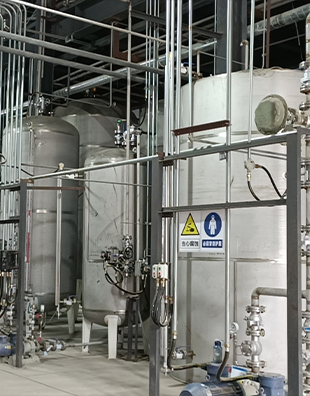polyhydroxycarboxylic acid
Polyhydroxycarboxylic acids (PHCAs) are a fascinating class of organic compounds characterized by the presence of multiple hydroxyl (–OH) and carboxyl (–COOH) functional groups within their molecular structure. These unique compounds have garnered significant attention in various fields, including chemistry, biochemistry, medicine, and environmental science, due to their diverse properties and applications.
One notable member of the polyhydroxycarboxylic acid family is citric acid, which is widely used in the food and beverage industry as a natural preservative and flavoring agent. Citric acid is a tri-carboxylic acid and possesses three carboxyl groups, making it an effective chelating agent that can bind metal ions. This property not only enhances the stability of food products but also plays a crucial role in metabolic processes within living organisms. Citric acid is a key intermediate in the Krebs cycle, a fundamental biochemical pathway that generates energy in aerobic organisms.
Another important polyhydroxycarboxylic acid is gluconic acid, produced through the oxidation of glucose. Gluconic acid and its derivatives are increasingly finding use in the pharmaceutical and cosmetic industries due to their biocompatibility and ability to enhance skin hydration. Additionally, gluconic acid is recognized for its potential in the production of biodegradable polymers, which are vital in addressing environmental concerns related to plastic waste.
The significance of PHCAs extends beyond their roles in food and cosmetics. Researchers are exploring their potential as environmentally friendly alternatives to synthetic compounds. For instance, polyhydroxycarboxylic acids can be synthesized from renewable resources, such as biomass, positioning them as sustainable options in industrial applications. This transition towards greener chemistry is essential in mitigating the environmental impact of traditional chemical processes and materials.
polyhydroxycarboxylic acid

In the realm of agriculture, polyhydroxycarboxylic acids have been identified as promising agents in enhancing soil health and plant growth. Their ability to form complexes with essential nutrients can improve nutrient availability, leading to better crop yields. Furthermore, PHCAs may contribute to soil carbon sequestration, a crucial process in combating climate change.
Despite their many applications, the study of polyhydroxycarboxylic acids is still evolving. Researchers are investigating their potential in various innovative applications, including drug delivery systems, where their ability to form hydrogels can be harnessed. These hydrogels may provide controlled release of therapeutics, thereby enhancing the efficacy and safety of medications.
In conclusion, polyhydroxycarboxylic acids are versatile compounds with a broad spectrum of applications. Their significance in food, pharmaceuticals, agriculture, and environmental sustainability highlights the potential for innovative uses in the future. Continued research into these compounds promises to unveil new opportunities for harnessing their beneficial properties while addressing pressing global challenges. As our understanding of PHCAs grows, so too does the potential for developing sustainable practices and products that can positively impact our world.
-
The Power of Isothiazolinones in Modern ApplicationsNewsMay.08,2025
-
Flocculants in Water TreatmentNewsMay.08,2025
-
Flocculants and Chemical Solutions: What You Need to KnowNewsMay.08,2025
-
Flocculants and Chemical Solutions: A Growing IndustryNewsMay.08,2025
-
Essential Chemicals: Polymaleic Anhydride and MoreNewsMay.08,2025
-
Acrylic Polymers: Essential Solutions for IndustryNewsMay.08,2025





